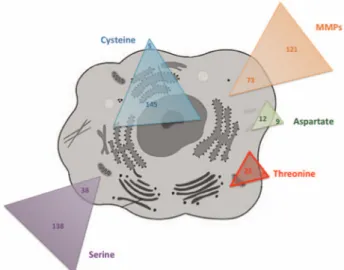Protease inhibition as new therapeutic strategy for GI diseases
Texte intégral
Figure



Documents relatifs
Figure 16. Schematic representation of major findings of this thesis. A) The CD40L-CD40 interaction does not rule pro-inflammatory cytokine production by monocyte/macrophages
There are several challenging and life-threatening com- plications associated with intravenous thrombolysis after acute ischemic stroke that may worsen outcome, such as
Circulating levels of matrix metalloproteinase-9 (MMP-9), neutrophil gelatinase-associated lipocalin (NGAL) and their complex MMP-9/NGAL in breast cancer
because the recruitment of immune cells to the site of infection ble tumor necrosis factor receptors in cerebrospinal fluid of children forms the basis for the development of
member but it has unexplored potential in various settings, which are of relevance in cancer. NOXA is best known as a selective inhibitor of MCL1, itself overexpressed in many
Dans le troisième chapitre, nous nous intéresserons à la navigation endovasculaire augmentée et à la visualisation des structures vasculaires lors de
Historiquement, le AhR a été décrit comme un récepteur de xénobiotiques mais des observations ou expériences récentes menées dans plusieurs laboratoires laissent
ﻣﻘﺪﻣﺔ..............................................................................................................: ﻻﺷﻚ ،ﺃﻥ ﺍﳌﻜﺎﻥ ﻳﺘﺒﻮﺃ ﻣﱰﻟﺔ